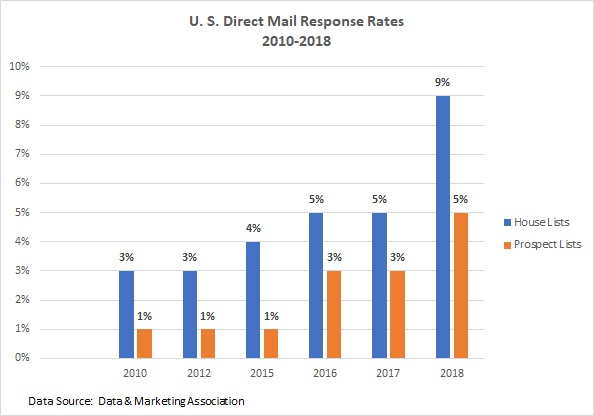For years, many advocates of print-based marketing channels and tactics have argued that the physical and tactile nature of tangible marketing materials make them more appealing and persuasive than purely digital forms of communications. Until recently, however, these arguments have been based mostly on instinct or intuition rather than on hard scientific evidence.
Over the past decade, several research studies have used neuroscience techniques to evaluate the effectiveness of physical vs. digital communications. These studies have consistently shown that the human brain is wired to like, trust and respond to marketing communications that use physical media.
One of the important studies was conducted in 2015 by Temple University’s Center for Neural Decision Making on behalf of the United States Postal Service Office of Inspector General. “Enhancing the Value of Mail: The Human Response” used survey questionnaires, eye tracking, core biometrics, and neuroimaging to evaluate differing responses to physical and digital media in the consumer buying process. The research found:
- Study participants processed digital content faster but spent more time with physical media.
- Study participants had a stronger emotional response and remembered the content better when viewing physical media.
- The brain activity of study participants indicated greater subconscious value and desire for products and services that were promoted in physical media.
A second important study evaluated the relative effectiveness of direct mail vs. email and digital display by way of their impacts on the human brain. This research was conducted by the neuromarketing research firm True Impact Marketing for Canada Post. “A Bias for Action” showed direct mail is:
- Easier to understand and more memorable than digital media
- More persuasive than digital media
- Visually processed quicker than digital media
- More likely to drive behavior than digital media
The continuing effectiveness of print-based marketing is evident from the recent resurgence of direct mail. According to the Data & Marketing Association (now a division of the Association of National Advertisers), the response rates produced by direct mail in 2018 were the highest in nearly a decade, as the following chart shows:

It’s also clear that after a period of what might be called excessive infatuation with all things digital, many marketers are again recognizing the value of physical marketing communications. In a 2019 survey of marketing executives and managers at North American companies by Lob.com, more than 60% of the respondents agreed or strongly agreed direct mail “delivers the best response rates” and “shows the best ROI” of all the marketing channels they are currently using.
Frontline marketing practitioners are also finding that adding physical communication elements to multichannel marketing programs improves performance. In a 2019 survey of marketers conducted by Demand Metric, over half of the respondents said they include direct mail in their multichannel marketing programs, and 80% of those respondents reported that direct mail improved the performance of their campaigns.
The persistent appeal of physical marketing materials cannot be explained on a purely rational basis. But as both psychologists and marketers have long recognized, human beings are not purely rational creatures.
And now, many economists also acknowledge human beings often make economic decisions for non-rational reasons. The rapidly evolving discipline of behavioral economics, led by people like Daniel Kahneman and Dan Ariely (his best-selling book “Predictably Irrational” inspired the title of this article), is based on this fundamental principle.
The intrinsic psychological appeal of printed marketing materials goes far to explain their continued effectiveness in a world increasingly dominated by digital communication methods. Printed marketing materials have also remained effective because personalization technologies have enabled marketers to make them more relevant for customers and prospects.
Print personalization technologies have been on the scene for more than two decades, but personalized print was not rapidly adopted because high production costs made its ROI uncertain.
Over the past few years, however, the economics of personalized print have improved, and the value of personalized marketing has become clear. As a result, the use of personalized printed materials has been growing. In the survey by Lob.com mentioned earlier, 58% of the respondents reported using some form of personalized direct mail.
Recent technological advances have also made it possible to automatically trigger the use of personalized physical marketing communications based on specific online prospect or customer behaviors. This means it is now much easier to incorporate printed marketing materials into multichannel marketing programs.
The bottom line for marketers and marketing procurement professionals is that printed marketing materials aren’t going away any time soon and are likely to remain an important component of the marketing communications mix for the foreseeable future.









